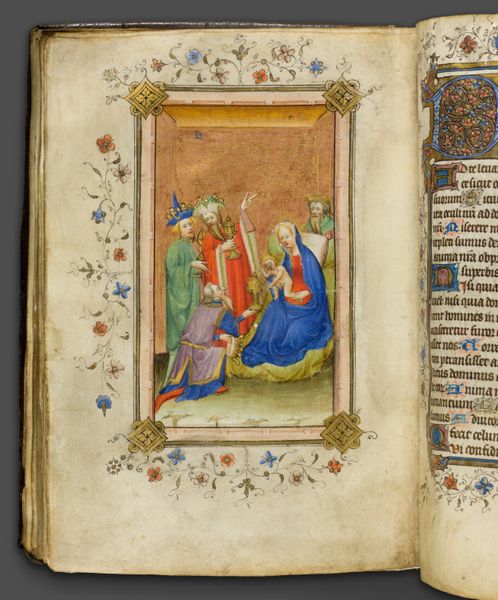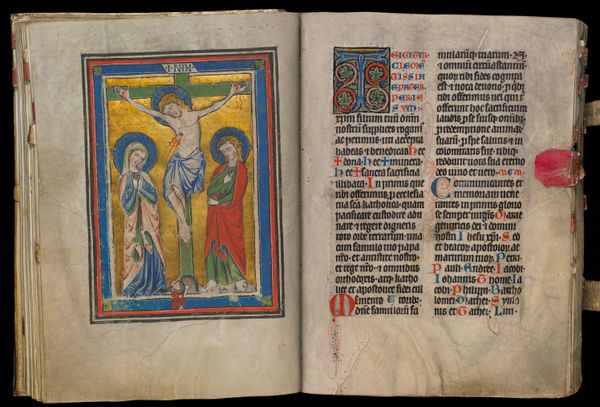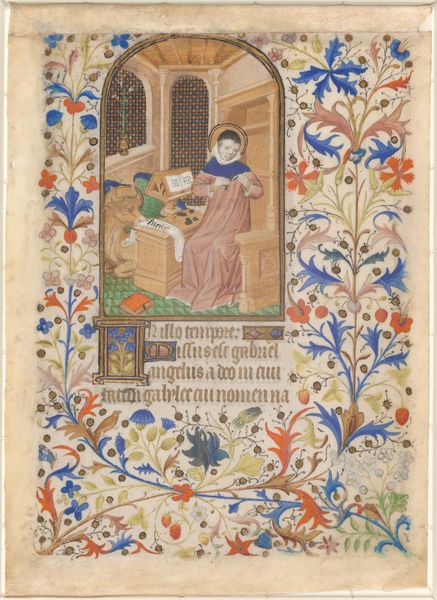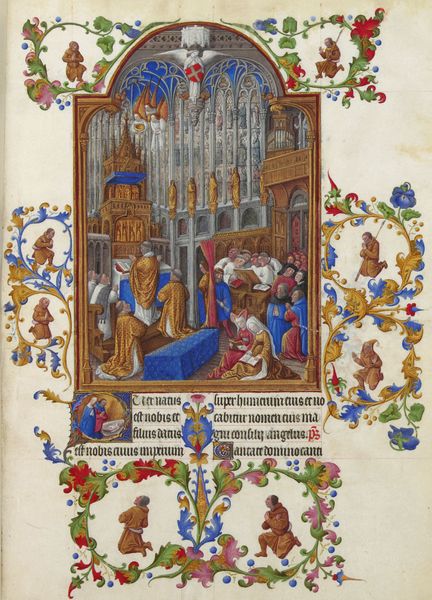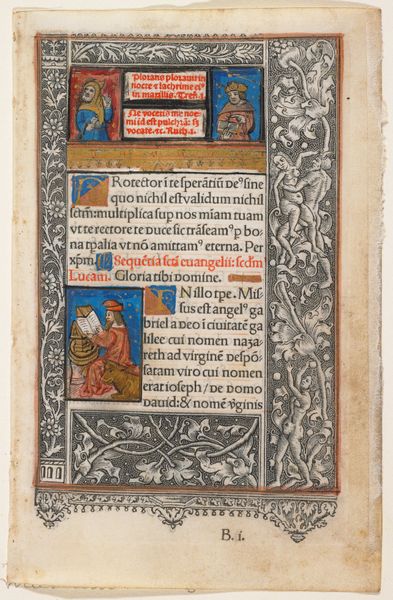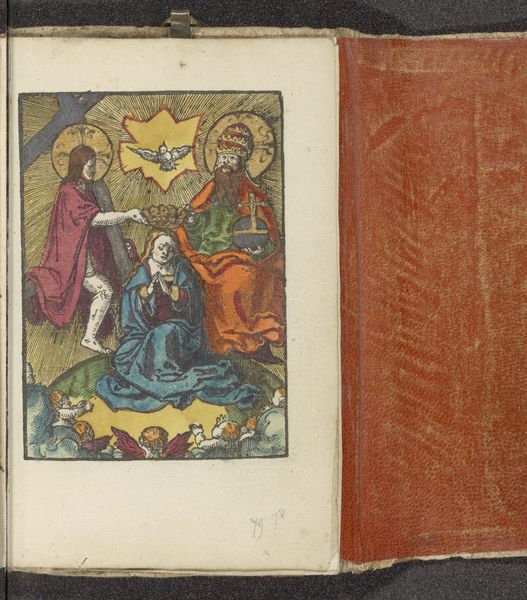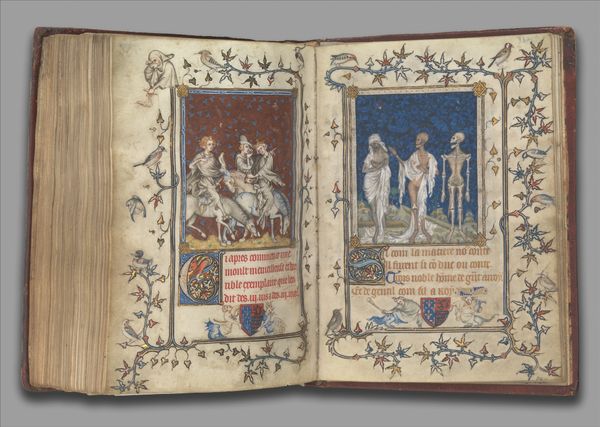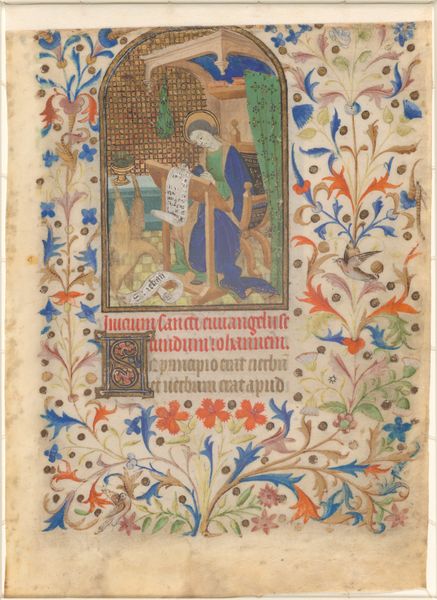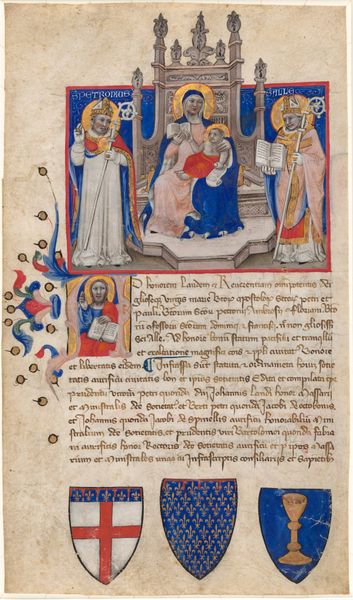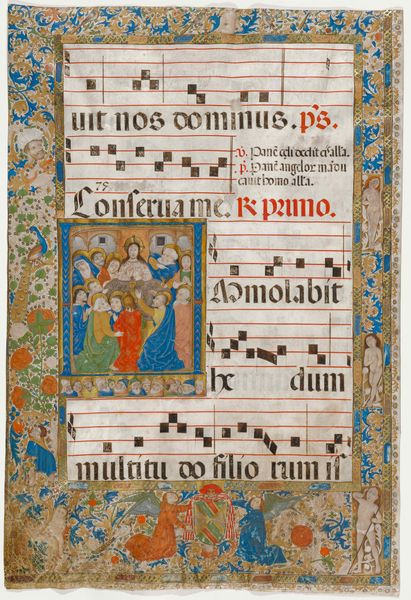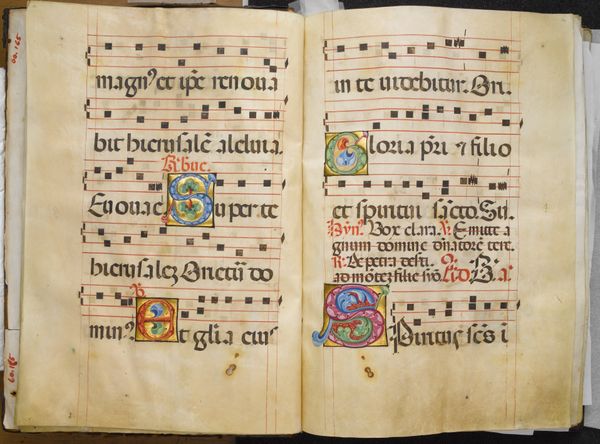
tempera, painting
#
medieval
#
narrative-art
#
tempera
#
painting
#
figuration
#
international-gothic
#
miniature
Dimensions: Manuscript: 2 9/16 × 2 1/16 × 1 1/8 in. (6.5 × 5.2 × 2.9 cm) Folio: 2 5/16 × 1 5/8 in. (5.9 × 4.2 cm) Illumination only: 1 7/8 × 1 5/16 in. (4.8 × 3.4 cm) Text area: 1 7/16 in. × 1 in. (3.6 × 2.6 cm)
Copyright: Public Domain
Editor: Here we have a page from a "Book of Hours," made sometime between 1525 and 1535 by Simon Bening. The scene is rendered in tempera paint, so delicate! I'm struck by how intimate the setting feels, despite depicting such a divine event. What do you see in this piece? Curator: For me, this image whispers of transitions. Look at the dove, a symbol of the Holy Spirit, descending, bridging the earthly and divine realms. Mary's pose, kneeling but receptive, signals a pivotal moment of change, both personal and cosmic. These Books of Hours weren't just about rote prayer; they were deeply personal objects, often passed down through generations, accumulating layers of emotional and familial significance. Do you notice any repeating visual patterns or motifs? Editor: Yes, now that you mention it, the borders are filled with these floral and botanical designs, sort of framing the scene and mirroring the ornate architecture in the background. Does that have symbolic meaning? Curator: Precisely! The natural world intertwined with sacred space speaks to the all-encompassing nature of faith, reflecting a prevalent medieval worldview. These seemingly decorative elements serve as anchors, connecting the spiritual narrative to the reader's lived experience. The vibrant colors themselves – the blues and reds – were often associated with royalty and piety. Consider what role colors can play to elicit our emotions. Editor: It’s amazing how much information is packed into such a small space! I hadn't thought about the cultural memory held within a devotional object like this. Curator: Exactly. And it demonstrates the enduring power of visual symbols to communicate complex ideas and emotions across time and cultures. Editor: I’ll definitely look at medieval art differently now, paying more attention to the layers of symbolic meaning embedded within them. Curator: As will I - remembering that symbols often act as emotional touchstones.
Comments
No comments
Be the first to comment and join the conversation on the ultimate creative platform.
